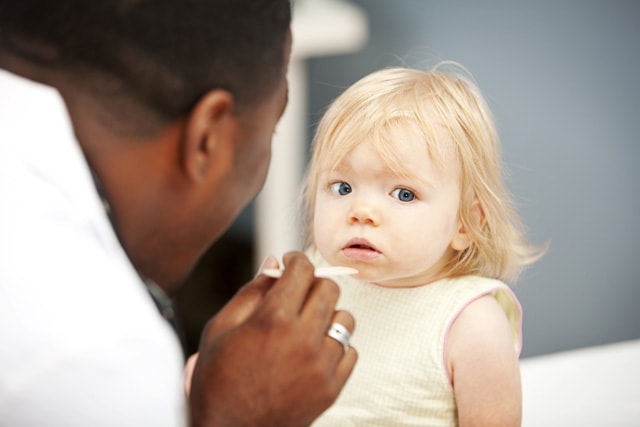How Do You Test a Baby's Eyesight?

If you're curious about your baby's eyesight, you can perform some simple tests yourself. These methods include looking for signs of vision problems, using eye drops to enlarge the pupils, and performing an ophthalmoscopy. However, these techniques are only helpful in evaluating vision problems, and a professional should perform them only if necessary.
Examining the pupils
Examining the pupils of a baby is an easy way to check if his or her eyesight is developing normally. It is usually performed in a darkened room to allow the pupil to dilate. Holding the infant's eye in a vertical position and rubbing it with clean fingertips can induce the pupil to open spontaneously. Hold the ophthalmoscope lens between 40 and 50 cm away from the child's eyes.
Examining the pupils of a baby can detect any eye problems that may develop later in life. Although eye problems in newborns are uncommon, they should be treated as soon as possible. Depending on the severity of the problem, an eye doctor can do a special examination for infants and young children. It is best to schedule the exam in the morning as babies are usually more alert in the morning. You should ensure that the baby is not too tired or hungry before the appointment.
Using eye drops to enlarge the pupils
One way to test a baby's eyesight is to dilate the pupils using eye drops. Dilating eye drops are effective for testing eye health and are sometimes used by doctors to diagnose certain eye conditions. They take time to work and can last for about six hours. In some cases, the effects last longer, and may even last for a day.
The drops are placed in the baby's lower eyelid. They can cause a mild stinging or burning sensation for a few seconds. The child may have blurred near vision or be more sensitive to light after receiving the drops. Many eye doctors recommend wearing sunglasses to prevent light sensitivity while using these drops.
Performing an ophthalmoscopy
An ophthalmoscope is a special instrument that magnifies images and allows the doctor to examine the structures of the eyes. The doctor will use a magnifying glass to examine the eyes and dilate the pupils. The ophthalmoscope will give a detailed view of the eyes and will detect any problems. An ophthalmologist will also check for signs of infection or structural issues, such as cataracts.
An ophthalmoscope is an important tool to assess a baby's eyesight. A health worker will hold the ophthalmoscope in a semi-reclined position and shine a very bright light into the eye. The health care provider may apply pressure to the eye, allowing them to examine the retina from a close range.
Looking for signs of vision problems in a baby
When a baby is still a young child, it's important to keep an eye on their eyesight. While their eyesight may look normal at first, they may have an eye problem that needs to be evaluated by an eye specialist. The first step in diagnosing a vision problem in a baby is to watch for any unusual behavior or eye movements. Babies generally start to focus on objects and their faces at four to five weeks of age. They also usually begin smiling and moving their eyes towards familiar objects.
Vision problems in babies can be congenital or acquired after birth. Regardless of the type, early detection is vital to preventing lifelong visual impairment. At their first neonatal checkup, a doctor should examine a baby's eyes for structural abnormalities such as cataracts, ptosis, or corneal opacity. If a baby exhibits any of these symptoms, the doctor should immediately refer the child to an ophthalmologist who specializes in pediatrics.
